I learned that the secret to any great Filipino dish isn't just in the ingredients, it's in the patience and love you put into it. This Ginisang Ampalaya at Hipon recipe makes me remember watching my Lola (grandmother) transform bitter gourd, a vegetable many kids (including my younger self!) would push aside, into a dish that had everyone asking for seconds.
After years of perfecting her technique, I'm excited to share my version of this classic Filipino favorite that combines tender-crisp ampalaya, plump shrimp, and perfectly cooked eggs in a savory blend that will make you forget you're eating something so healthy.
Even if you've been hesitant about ampalaya (bitter gourd) before, this recipe might just change your mind. Iit certainly changed mine and has become my go-to recipe when I want to impress my own family with something both nutritious and nostalgic.
Jump to:
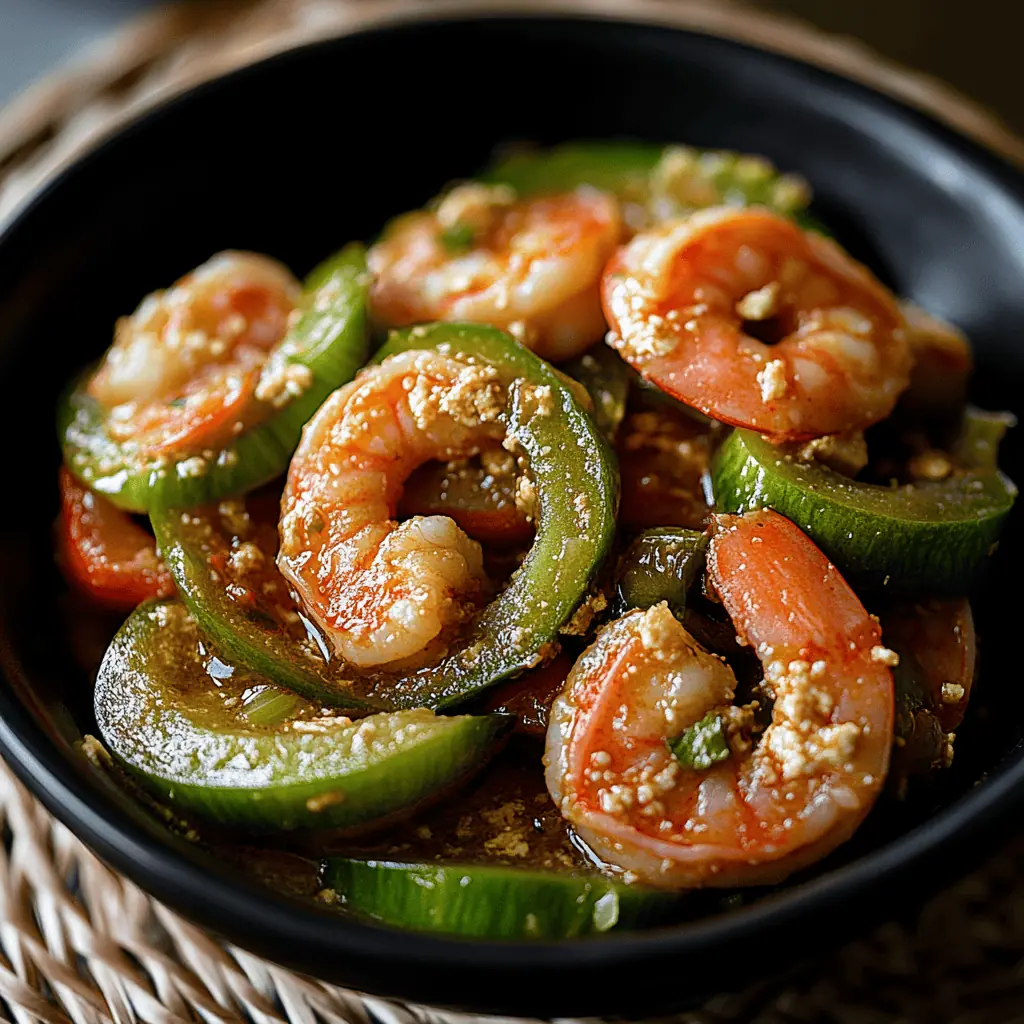
Why You'll Love This Recipe
- Perfect balance of flavors: The natural bitterness of ampalaya is expertly balanced with savory shrimp and sweet tomatoes
- Nutritious powerhouse: Packed with vitamins C, A, and B6, plus protein from shrimp and eggs
- Budget-friendly: Uses simple, accessible ingredients
- Quick and easy: Ready in just 35 minutes
- Authentically Filipino: A beloved dish that graces tables across the Philippines
- Versatile: Can be customized with different proteins or made vegetarian
Ingredients
The ingredients in this Ginisang Ampalaya at Hipon work together harmoniously for both flavor and nutrition. Ampalaya (bitter gourd) is the star, celebrated for its unique taste and impressive health benefits, especially for blood sugar regulation.
Shrimp adds lean protein and a subtle sweetness that naturally counterbalances the bitterness. Eggs create a silky texture while adding richness and more protein. The aromatic base of garlic, onions, and tomatoes builds the essential savory foundation of Filipino cooking, while fish sauce provides that crucial umami depth.
Each component serves a purpose - either enhancing flavor, balancing bitterness, improving texture, or boosting nutritional value. This thoughtful combination transforms a challenging vegetable into a crave-worthy dish.
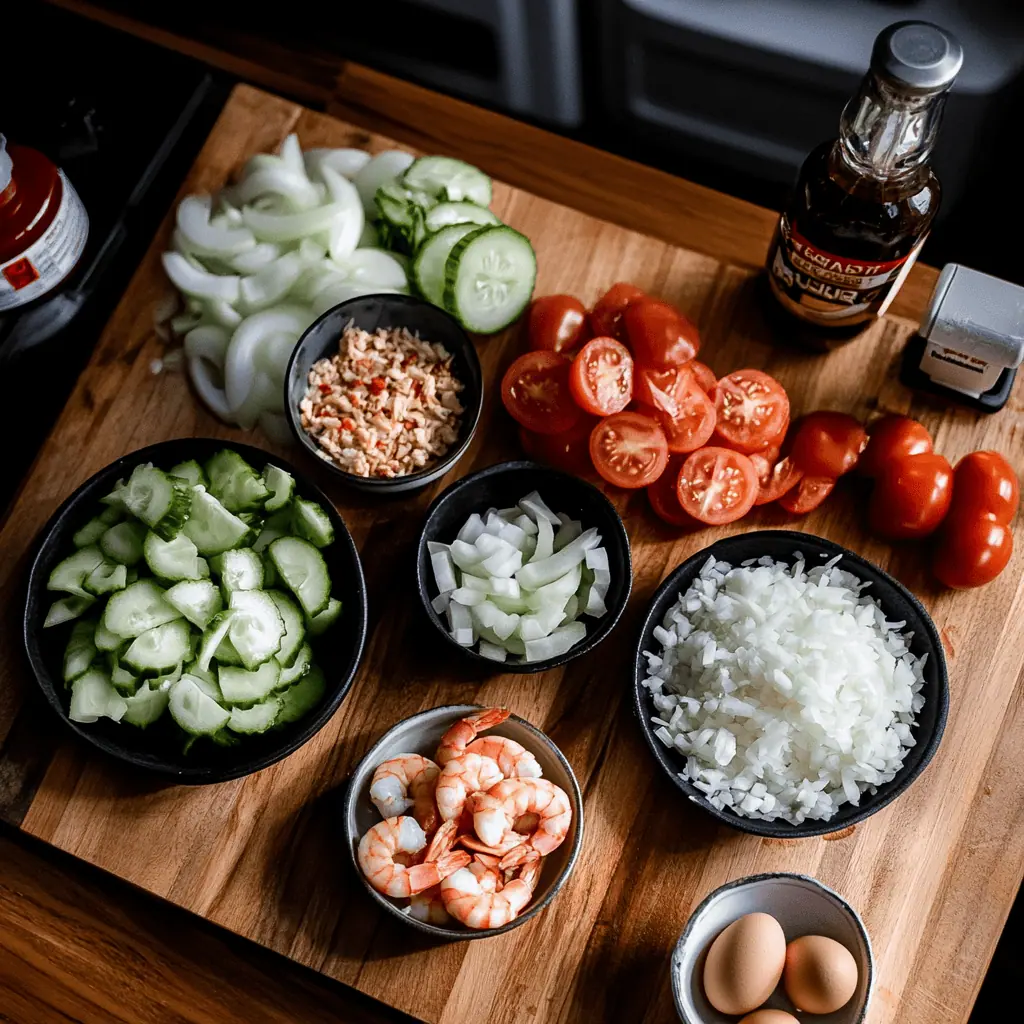
For the main dish:
- 4 medium ampalaya (bitter gourd)
- ½ pound medium shrimp, peeled and deveined
- 2 large eggs
- 2 large Roma tomatoes
- 1 medium onion
- 3 cloves garlic
For seasoning:
- 1 tablespoon fish sauce
- ½ teaspoon sugar
- Salt to taste
- 1 tablespoon cooking oil
- 1 cup water
Equipment
- Large wok or skillet (Kawali): Provides even heat distribution essential for proper stir-frying
- Sharp knife: Ensures precise vegetable slicing, especially important for the ampalaya
- Cutting board: Provides a stable surface for preparation
- Measuring spoons: Ensures accurate seasoning for consistent results
- Colander: Used for draining ampalaya after the debittering process
- Wooden spoon: Allows for gentle stirring without scratching your cookware
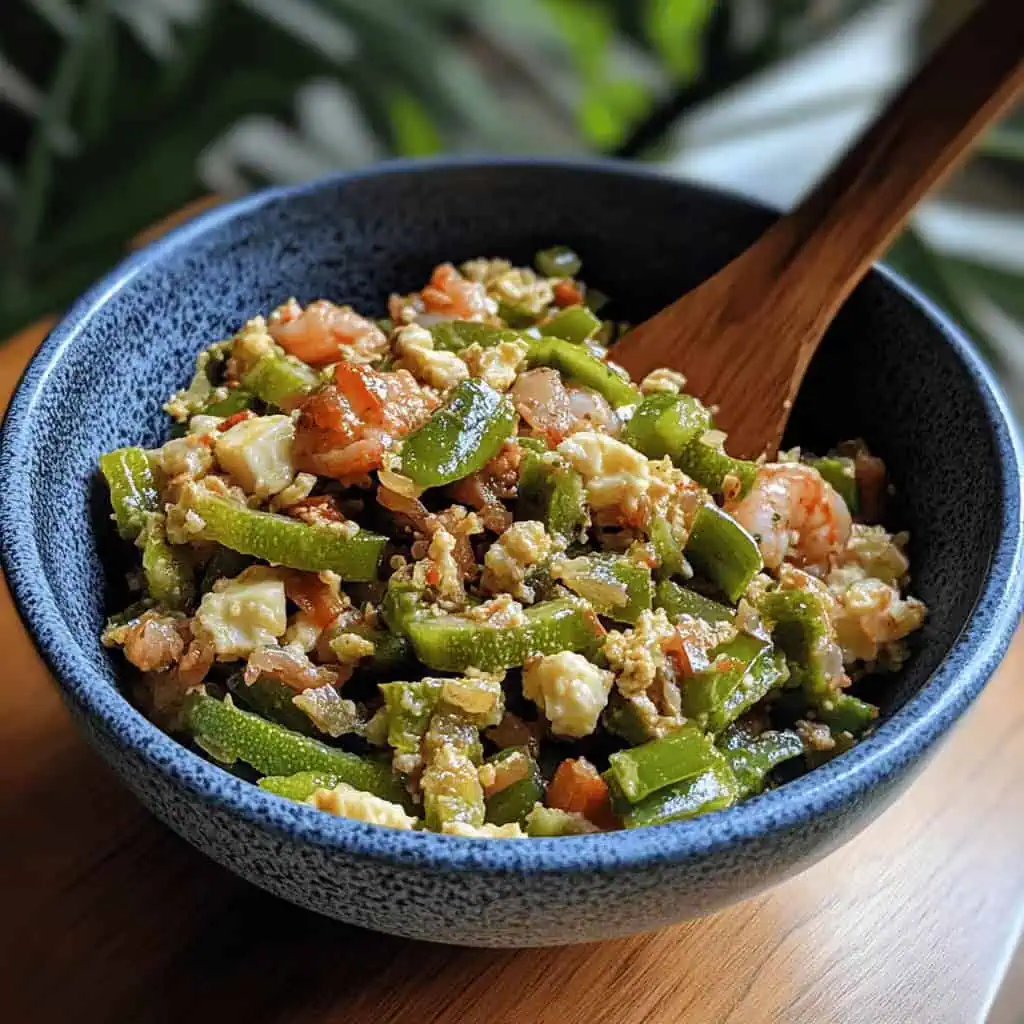
How To Make
- Prepare the ampalaya: Cut 4 medium bitter gourds lengthwise, carefully remove all seeds and white pith (this significantly reduces bitterness). Slice thinly.
- Prepare remaining ingredients: Thinly slice 1 medium onion, mince 3 cloves of garlic, chop 2 large Roma tomatoes, and ensure ½ pound shrimp are peeled and deveined.
- Start cooking: Heat 1 tablespoon cooking oil in a large wok or skillet over medium heat. Sauté the minced garlic until fragrant. Add the sliced onions and cook until translucent. Add the chopped tomatoes and cook until they become soft.
- Cook the shrimp: Increase heat to medium-high and add the shrimp. Cook until they turn pink, about 2-3 minutes. Add 1 tablespoon fish sauce.
- Add ampalaya: Reduce heat to medium and add the sliced ampalaya. Pour in 1 cup of water and cook for 3-4 minutes until the ampalaya is tender-crisp. Be careful not to overcook as this can increase bitterness.
- Finishing touches: Lower the heat and add ½ teaspoon sugar. Pour 2 beaten eggs in a circular motion over the mixture. Gently stir until the eggs are just set. Season with salt to taste.
- Serve: Enjoy hot with steaming white rice. For added flavor, serve with calamansi or soy sauce on the side.

Tips from Lola's Kitchen
- Choose wisely: Select young, dark green ampalaya for less bitterness. The younger, the better!
- Precision matters: Don't skip removing the white pith completely – this is where most of the bitterness hides
- Salt technique: After slicing, some cooks sprinkle salt on the ampalaya, massage it in, then rinse – this draws out additional bitterness
- Timing is crucial: Don't overcook the ampalaya to maintain nutrients and prevent excessive bitterness
- Perfect eggs: Add eggs last and stir gently to keep them silky and not rubbery
- Size matters: Use small to medium shrimp for better distribution throughout the dish
- Heat management: Pay attention to the heat levels in each step for best results
Substitutions
- Protein options: Replace shrimp with ground pork, chicken, tofu, or mushrooms
- Fish sauce alternative: Soy sauce works well as a substitute
- Tomato options: Canned diced tomatoes can replace fresh if needed
- Onion varieties: Shallots can substitute for regular onion for a milder flavor
- Vegan adaptation: Use scrambled tofu instead of eggs for a plant-based version
Troubleshooting
If your dish is too bitter:
- Add ½ teaspoon more sugar to balance the flavor
- For future dishes, remove white pith more thoroughly
- Try salting and rinsing the ampalaya before cooking
- Choose younger, smaller ampalaya next time
If your dish is too watery:
- Cook uncovered longer to reduce excess liquid
- Drain ampalaya well before adding to the pan
- Use less water initially in the recipe
If your shrimp are tough:
- Reduce cooking time for the shrimp
- Remove shrimp earlier in the process and add back at the end
- Cook at medium heat instead of high heat
Storage & Reheating
Storage:
- Refrigerate in an airtight container for up to 3 days
- Not recommended for freezing as ampalaya texture will deteriorate
Reheating:
- Stovetop: Warm over medium heat for 3-4 minutes, stirring occasionally
- Microwave: Heat for 2-3 minutes at 50% power to prevent rubbery shrimp
- Add 1-2 tablespoons water when reheating if the dish seems dry
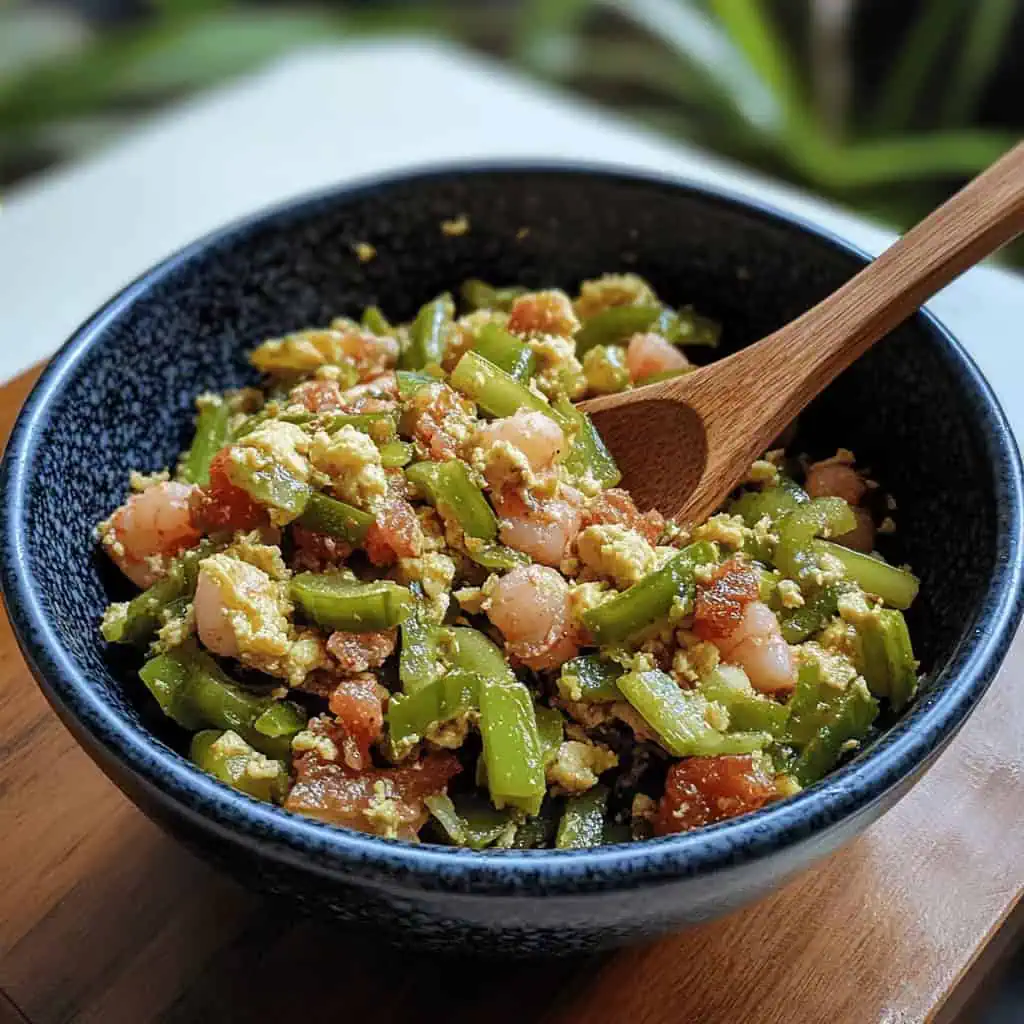
FAQ
Why is my ampalaya still very bitter despite following the recipe?
Some ampalaya varieties are naturally more bitter than others. Try the salt technique – sprinkle sliced ampalaya with salt, let sit for 15 minutes, then rinse thoroughly before cooking.
Can I prepare this dish in advance for a party?
While best served fresh, you can prepare it up to a day ahead. Store in the refrigerator and reheat gently. The flavors actually develop nicely overnight.
Is this dish keto-friendly?
Yes! Ampalaya is low in carbs and high in fiber, making this dish suitable for keto diets when served without rice.
Can I use frozen ampalaya?
Fresh is preferred, but frozen works in a pinch. Thaw completely and drain well before cooking to prevent excess water in the dish.
How can I make this dish more substantial for a main course?
Double the protein by adding more shrimp or mixing in some ground pork. You can also serve it with cauliflower rice for a low-carb option.
Is there a way to make this dish less spicy for children?
This recipe isn't inherently spicy, but if you're concerned about bitterness, increase the sugar slightly to ¾ teaspoon and make sure to thoroughly remove the white pith.
Related
Looking for other recipes like this? Try these:
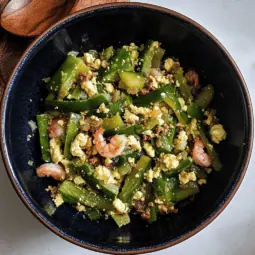
Ginisang Ampalaya at Hipon (Bitter Gourd with Shrimp)
Equipment
- Large wok or skillet (Kawali) For even heat distribution and proper stir-frying
- Sharp knife (kutsilyo) For precise vegetable slicing
- Cutting board (Sangkalan) For preparation
- Measuring spoons (Kutsarita/Kutsara) For accurate seasoning
- Colander (salaan) For draining ampalaya
- Wooden spoon (sandok na kahoy) For gentle stirring without scratching the pan
Ingredients
Main Ingredients:
- 4 medium ampalaya bitter gourd
- ½ pound medium shrimp hipon, peeled and deveined
- 2 large eggs itlog
- 2 large Roma tomatoes kamatis
- 1 medium onion sibuyas
- 3 cloves garlic bawang
Seasonings:
- 1 tablespoon fish sauce patis
- ½ teaspoon sugar asukal
- Salt asin at paminta to taste
- 1 tablespoon cooking oil mantika
- 1 cup water tubig
Instructions
- Start by preparing the ampalaya: Cut 4 medium bitter gourds lengthwise (hatiin sa haba), carefully remove all seeds and white pith as this reduces bitterness. Slice thinly (hiwain ng manipis). Prepare the remaining ingredients at room temperature: thinly slice 1 medium onion (sibuyas), mince 3 cloves of garlic (bawang), chop 2 large Roma tomatoes (kamatis), and ensure ½ pound shrimp (hipon) are peeled and deveined.
- Heat 1 tablespoon cooking oil (mantika) in a large wok or skillet (kawali) over medium heat (180°C/350°F). Sauté the minced garlic until fragrant. Add the sliced onions and cook until translucent. Add the chopped tomatoes and cook until they become soft.
- Increase heat to medium-high (200°C/400°F) and add the shrimp. Cook until they turn pink, about 2-3 minutes. Add 1 tablespoon fish sauce (patis).
- Reduce heat to medium (180°C/350°F) and add the sliced ampalaya. Pour in 1 cup of water (tubig) and cook for 3-4 minutes until the ampalaya is tender-crisp. Be careful not to overcook as this can increase bitterness.
- Lower the heat (150°C/300°F) and add ½ teaspoon sugar (asukal). Pour 2 beaten eggs (itlog) in a circular motion over the mixture. Gently stir until the eggs are just set. Season with salt (asin) and pepper (paminta) to taste.
- Serve hot with steaming white rice (kanin). For added flavor, serve with calamansi or soy sauce (toyo) on the side.
Tips from Lola's Kitchen
- Choose young, dark green ampalaya for less bitterness
- Don't overcook the ampalaya to maintain nutrients and prevent excessive bitterness
- Add eggs last to keep them silky and not rubbery
- Use small to medium shrimp for better distribution in the dish
Nutrition
The Story Behind Ginisang Ampalaya at Hipon (Bitter Gourd with Shrimp)
In the sun-drenched fields of the Philippines, ampalaya (bitter gourd) has been cultivated for generations, its distinctive wrinkled exterior and bold bitter flavor making it a staple in Filipino cuisine. Ginisang Ampalaya at Hipon emerged from the coastal regions where fresh seafood meets local produce, showcasing the Filipino talent for creating extraordinary dishes from simple ingredients.
This humble dish tells the story of Filipino resourcefulness. When Chinese traders introduced bitter gourd to the Philippines centuries ago, local cooks masterfully incorporated it into their cooking repertoire. They discovered that pairing ampalaya with protein-rich shrimp (hipon) and eggs not only created a complete meal but also helped balance the vegetable's natural bitterness. The addition of garlic, onions, and tomatoes – the holy trinity of Filipino ginisa (sautéed) dishes – further transformed the intimidating bitter gourd into a beloved ulam (main dish).
Today, Ginisang Ampalaya at Hipon appears regularly on Filipino tables from Manila's busy households to provincial family homes. It's particularly popular during the summer months when ampalaya grows abundantly, though it's now enjoyed year-round as a go-to healthy option. The dish perfectly embodies the Filipino principle of "sangkap-pinoy" – making the most of local, affordable ingredients while delivering both nutrition and flavor.
What makes this recipe endure is its versatility and health benefits. Modern health enthusiasts praise ampalaya for its ability to help regulate blood sugar, while traditionalists value its robust flavor and accessibility. Whether served in humble carinderias (local eateries) or prepared for family meals, Ginisang Ampalaya at Hipon remains a testament to Filipino culinary wisdom – proving that with the right technique and ingredients, even the bitterest vegetable can become a craved comfort food.
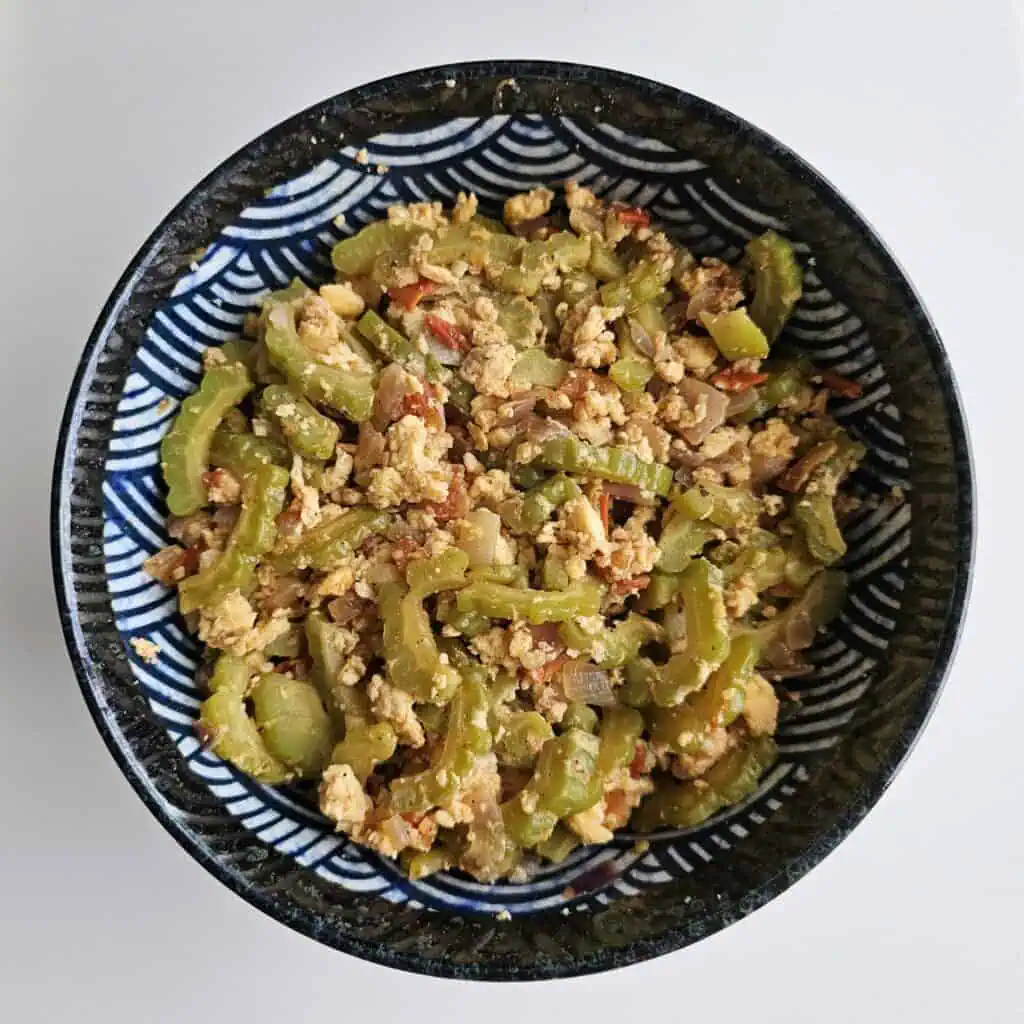

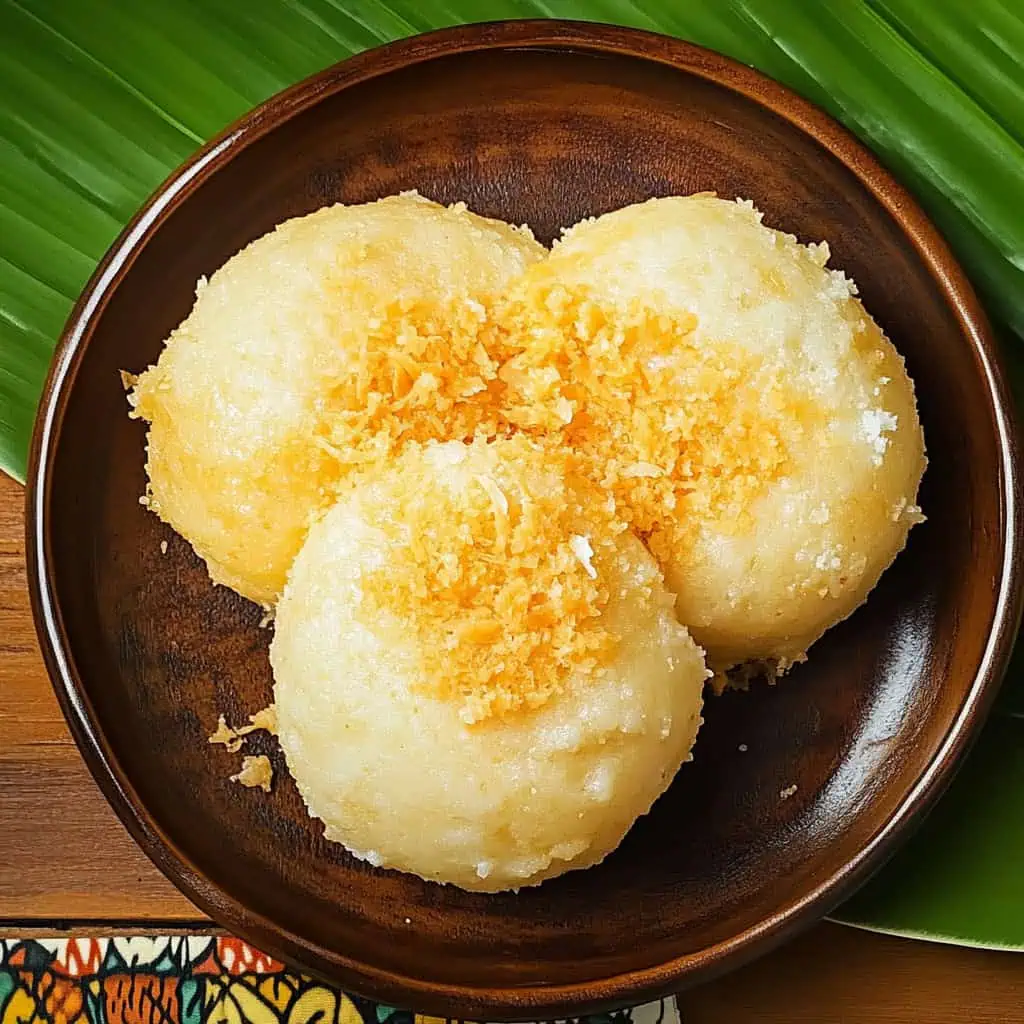
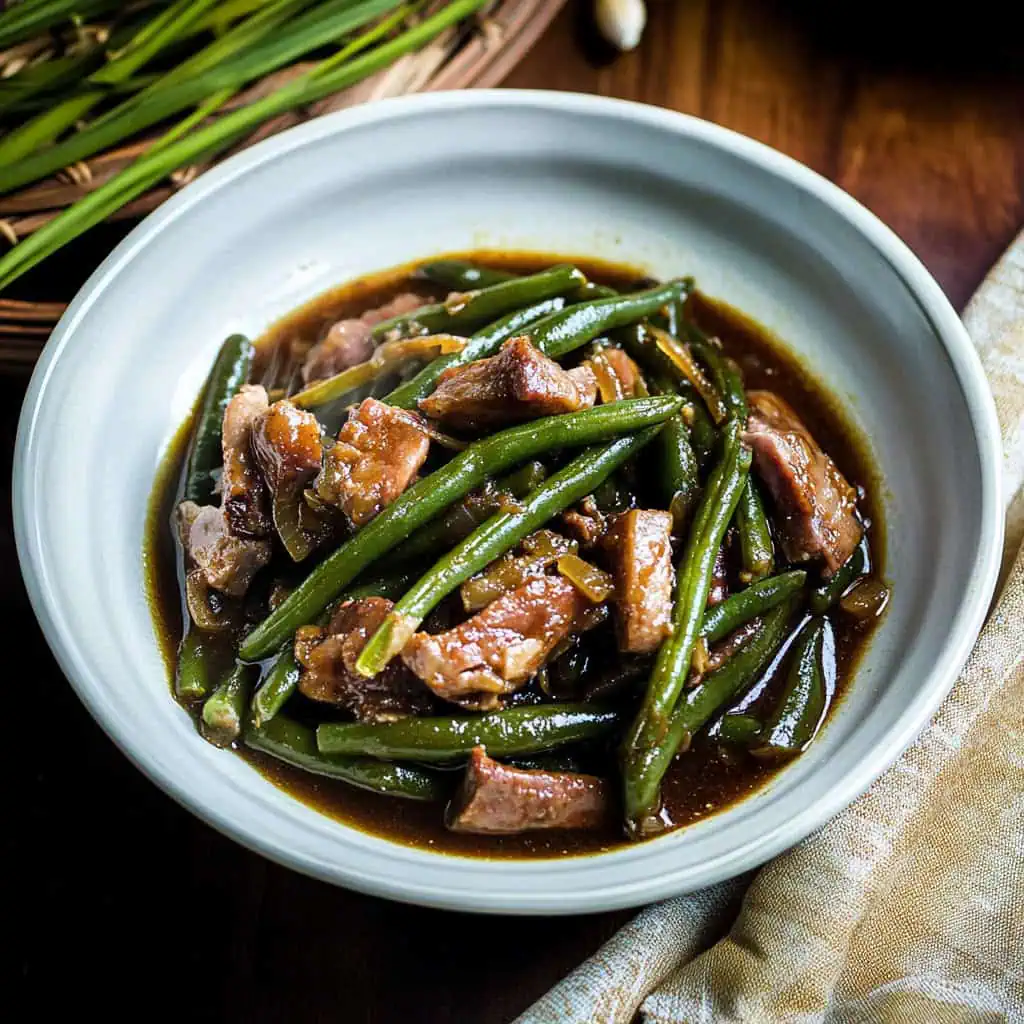

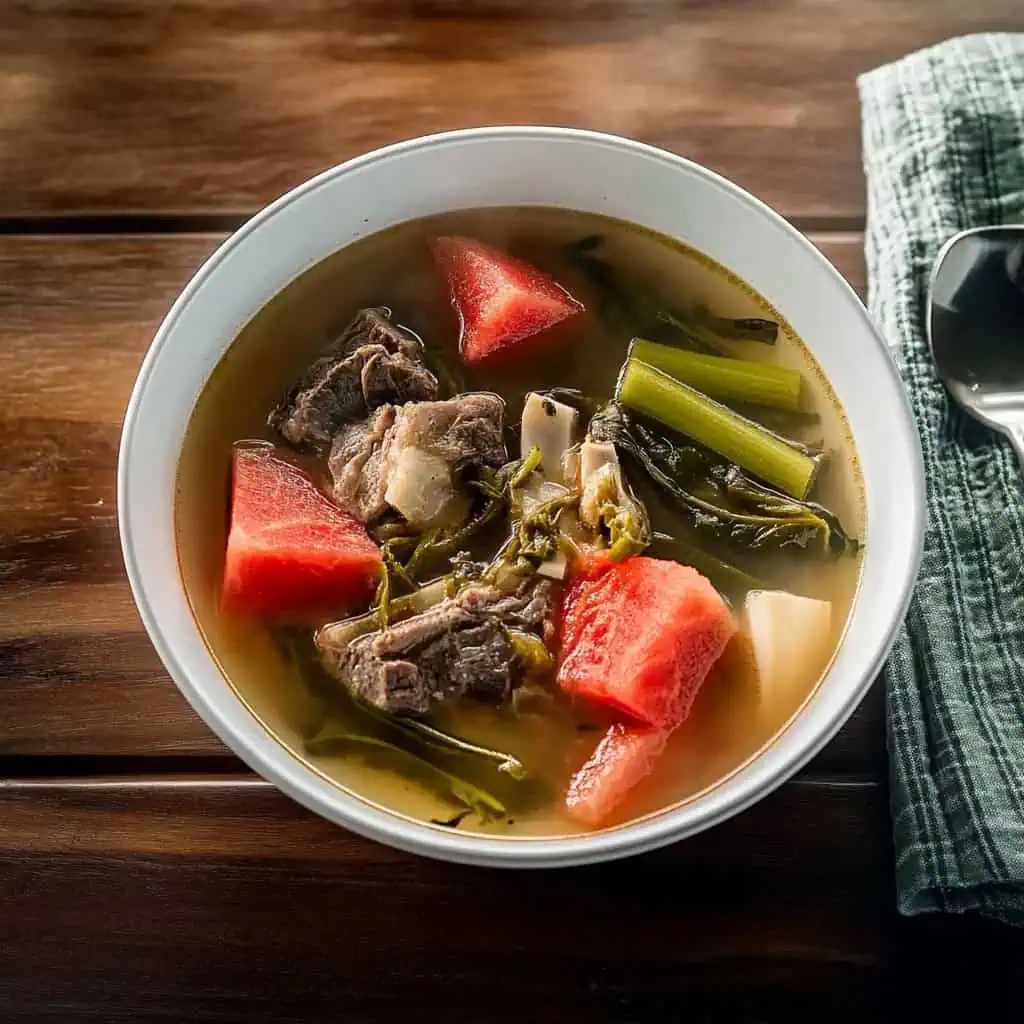


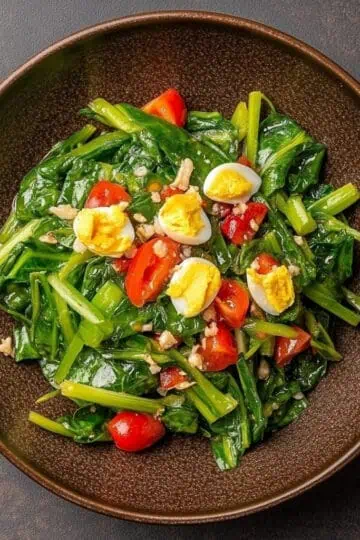

Comments
No Comments